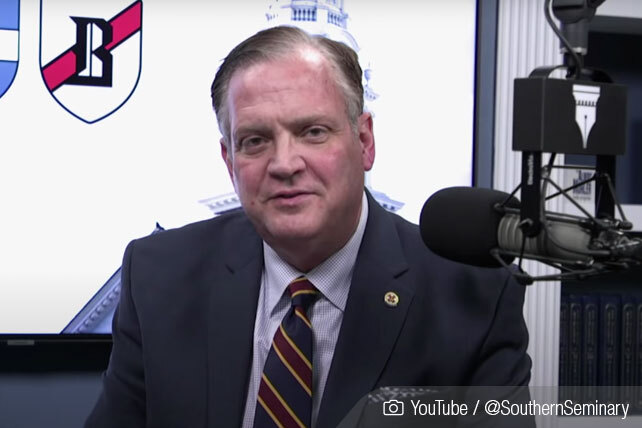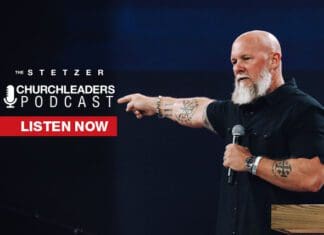Editor’s note: this excerpt from R. Gracie Travis Murphree’s Journey to Justice: Finding God and Destiny in Darkness tells one of Gracie’s many stories of God’s leading through their call to missions.
Within a couple of weeks of our arrival in Honduras during the rainy season, half of the local police post collapsed. The adobe gave way and the dirt walls crumbled to the ground. We began to sense in the Spirit that we needed to repair the police station. But when we spoke with villagers about helping, their response was to not have anything to do with the police because they were corrupt. The villagers talked about the history of death squads and other problems with the police.
They were terrified of the police and wanted nothing to do with them.
As we prayed more and more about the situation, God’s leading told us our entire ministry in Honduras would begin with the rebuilding of the police post. It made no sense to us, but this was what God told us to do. We obeyed. We bought supplies and paid men to repair it.
A short time later, while I was in the village inspecting a latrine we had built for a family, my walkie-talkie for communicating with the ministry buzzed. The frightened voice of our caretaker at the farm said the police were at the mission and I needed to come back. I remember pedaling my bike through the village as fast as I could, wondering what I would find. We were still living on the farm at this time.
As I came around the corner and approached the mission, I saw the yard filled with men in blue and black camouflage uniforms, wearing black flack vests and holding semi-automatic weapons. Every building at the farm was shut tight, doors and windows closed, and there wasn’t another person to be seen. Everyone was hiding from the group of armed men in the yard.
Carlos, the sergeant from the police post, smiled at me as he swung open our gate, but that didn’t reduce the fear pounding in my heart after all the stories I had heard. I leaned my bike against the brick house in which we lived, and Carlos led me to a tall man in uniform with gold leafing on his cap and two gold suns on his shoulders. He stood there with his arms crossed as I came up in front of him. He appeared important and intimidating.
He greeted me and said he was a police colonel, chief of all the police in Francisco Morazán outside of the capital.
“We are aware of your activities,” he said as he began to explain why they were there.
I stood, arms crossed, nodding while my mind raced. They knew of our activities? Were they watching us? Is this a good thing? Is this a bad thing? I was frightened. I wasn’t used to having a dozen heavily armed men in my yard.
He began to tell me his superiors desired to strengthen the communication and relationships between the community and the police. He wanted us to act as a bridge between the police and the people. When we went to deliver food or medicines, they would go with us, so the people would see them serving.
Through God’s leading we were being asked by the government to stand in the gap and teach the police how to serve the people.
He also asked me to begin English classes with his ranking officers, so they would be able to have better communication and relationships with the missionaries in the area. I agreed that we would work together, and they left.
During the following weeks, the colonel visited us at coffee hour (3 p.m.) and sometimes came to dinner. We shared life stories while we talked of God and began to know each other better. How exciting it was to learn this colonel was a Christian! However, it was a bit intimidating to have their weapons on the kitchen table or leaning against the chairs. I finally told them of our custom of putting coats and bags on the master bed when guests arrived. After that, they would enter, drop their semiautomatic weapons and vests on the master bed, keeping their sidearms and radios when they sat at the table. It was rather odd, but humorous, to see their equipment piled on the bed instead of pocketbooks and coats.
I shared my testimony about having been a victim of rape, being a single mother, suffering domestic violence, psychological abuse, and other things throughout my life. I shared that I had worked as a special needs foster care provider, advocated for victims, had experience in investigation as a freelance correspondent for the Boston Globe and writer/editor for the Decatur Daily— among other experiences—as well as part of my degree including studies of investigation and forensics.
We learned of God’s leading in his life and love for the Lord, prayed together, talked about family and work.
Ministry is all about relationships.
Everything Jesus did in his ministry was focused on relationships with people, showing us how to live in the same manner. In this moment, God was bringing my husband Lee and me into a life-long relationship with another believer in Christ, who also happened to be a police colonel in one of the most dangerous countries in the world.
One morning, a few weeks after we first met the colonel, a police truck showed up at the gate and the sergeant told me the colonel wanted to meet with me right away. I was still in my pajamas, so I gave him a cup of coffee while I got dressed. I worried something was wrong because of how urgent the sergeant appeared to be about this meeting.
Arriving at the police station was like walking into a second home because I had been visiting the headquarters quite frequently during the past weeks. Every officer greeted me in the guardia (reception) with a hug and smile, calling me their sister or Mami. I walked through the swinging door, through the courtyard, and up to the second floor where the colonel’s office was located. His secretary greeted me and let me inside, asking if I wanted coffee. I declined politely as the colonel waved me toward the couches and gestured for me to sit.
I sat on the small couch in front of his desk while the colonel spoke on the telephone. I began thinking about how the last couple of months had brought me to be sitting in his office. Only God could have orchestrated this. I remember thinking, “Here I am sitting in an office of a colonel in Central America,” and wondering what God was going to do next. More than a decade later, it is still clear in my mind.
I did not know then that this was a life-changing moment by God’s leading.
His desk was well ordered and clean, much as one would expect from the military. In Honduras, the police are a lot like the military. Officers lived at the stations, and everyone saluted their superiors. Facing me on the desk was his name plate: Alex Roberto Villanueva Meza. We knew him as Alex. He finished his call, leaned back in his chair and smiled.
Alex told me about the violence in Honduras and the high levels of abuse of vulnerable groups: women, children, elderly, and disabled. The levels of brutality against women and children was alarming. He told me the police were limited in what they were able to do and were not sure about how to tackle the problem. He had been speaking with his superiors and they wanted to know if I could write a program for victims of violence—specifically focused on these vulnerable groups.
Here we were, only a couple of months into living in this country, and I was sitting in the office of a police colonel who was saying that his superiors, including the minister of security—a presidential Cabinet position—wanted to know if I could write a program to help victims of special crimes. The first thing that popped into my head was that I wasn’t qualified for the task.
Why were they asking me? Wasn’t there some big, professional organization out there that could do this? Someone else who was more qualified?
We sat in silence for a minute. Then, without realizing I had said it, the word “sure” popped out of my mouth. I was just as surprised that I had agreed to do it as he was happy that I had. We were now committed. There was no backing out.
That’s how it is with God. He leads you somewhere without telling you what you are going to do, throws you into a situation that is beyond anything you could imagine, and drops an opportunity in your lap. To be honest, I had no clue what I was going to do.
But even then, my Spanish was still not adequate to understand the legal language, nor was I fluent enough to write a program in Spanish. There were many reasons why I wasn’t qualified or able to do this project.
But God is bigger than any challenge we might face. Day after day, I sat with my English-Spanish dictionary and the law books, sometimes translating each word as I read the laws and procedures. Something began to happen as I continued through this process. I wrote the entire program in English and sat with two police officers, who assisted me with context, and our dictionaries translating the program into Spanish.
Each day I prayed and asked God’s leading on what I was doing, and through all of this, I began formulating a program. By mid-January 2006, I had completed the program and titled it Proyecto de Colaboración de Apoyo para Victimas de Violencia y la Niñez. In English: Project of Collaboration of Support for Victims of Violence and Children. I was excited . . . and nervous. It was all printed out and packaged up formally in a binder. God had something enormous planned that I didn’t even know about.
Alex was busy when I arrived, but his secretary took me to his office to wait for him and put a cup of coffee on the desk for me to drink while I waited. A few minutes later, Alex came in, sat down at the desk with a smile, and asked me how I was doing. I told him I had completed the project and held it out to him.
I had thought he would look it over, but he took it from my hands and plopped it on the side corner of his desk and leaned forward, smiling. Looking back, I remember his face glowed as if he had a surprise he was about to give to me. But in that moment, I was a bit flustered because I had diligently worked for four months on this difficult project and he wasn’t even reviewing it.
Before I share what happened next, I need to share what I heard in a sermon this morning before I began writing this. Pastor Steven Furtick said, “Life’s biggest opportunities aren’t always obvious.”
My husband, Lee, and I heard the Lord tell us to come to Honduras. No explanation of what we would do. Just, “Go.” We obeyed. The police post in our village collapsed in the rains. God said to rebuild it, and that act of obedience would define our entire ministry. It made no sense, but we obeyed. A colonel in the police told us they need us to write a program for victims. I had no clue what to do. God said to do it—or rather he made the word “sure” pop out of my mouth before I could think to say anything else.
All that to bring us to this moment of destiny. “Aren’t you even going to look at it?” I asked him.
I was unaware that by God’s leading the biggest opportunity of my life—of our lives—was about to be offered.
“Yes, but first let me take you downstairs to show you the office we are building for you, because you are now chief of the Oficina Integral de Atención de Delitos Especiales”—Office of Attention for Special Crimes. He continued, “There will be two police officers assigned to you.”
I was listening to him, but I did not understand what was going on. “What are you talking about?” I asked.
He said, “Let me say it again, you are now chief of special crimes. We have an office we are building for you and you have two police officers assigned to you.” He picked up his pen and wrote out on a piece of paper, speaking as he wrote: “Coordinadora de la Oficina Integral de Atención de Delitos Especiales.” He handed it to me.
It was a fact, a done deal. It was destiny. Suddenly most everything in my life made sense. Everything I had ever done, and all that had happened in my life, God was using to lead me on the journey to this moment and what would come of it in the future.
We did not go to the government to begin this work in justice. They came to us. That was God. And God didn’t tell us what it was that we would do in Honduras before we came. I believe it is because we would have thought it was too big, too difficult, and too scary.
That night as Lee and I discussed the day’s events, I remembered the pain in the prayer. I remembered that every time I prayed for Honduras during our year of preparation, it felt like a dark cloud would hover and then lower over me, pressing me. It was so painful, it would bring me to tears. All I felt was pain, darkness, and hopelessness.
There it was: our purpose. The pain and suffering, the injustice suffered, the oppression of the vulnerable. God sent us to bind up the brokenhearted, proclaim freedom to captives, release from darkness prisoners, to loose the chains of injustice, and set the oppressed free. Those were the very Scriptures in Isaiah 61 that God had given us. It was beginning to make sense.
As we prayed that night, the Lord revealed that the darkness and pain I felt in prayers for Honduras was the pain and suffering the women and children endured. The pressing I felt brought to us the image of Jesus in the Garden of Gethsemane right before he was unjustly arrested, tortured, and put to death.
At that rock he prayed the Father would take the cup from him. As man he could not bear the pain, knowing what lay before him. But then he chose to continue his journey to our salvation—God’s ultimate justice of making things right for us. He rose from his place of prayer, and with full knowledge of the suffering he would endure, he walked to the cross.
Not only did God’s leading reveal our destiny that night, but he also revealed our name: The Heart of Christ. A heart that feels and sees the suffering in this world, and knowing the sacrifice and pain to do something, is compelled by love to journey into the darkness. It is a heart that cannot “not” act.
He died for us. And soon He would ask us if we were willing to die for Him.
This account is an excerpt from ‘s book, Journey to Justice: Finding God and Destiny in Darkness.












